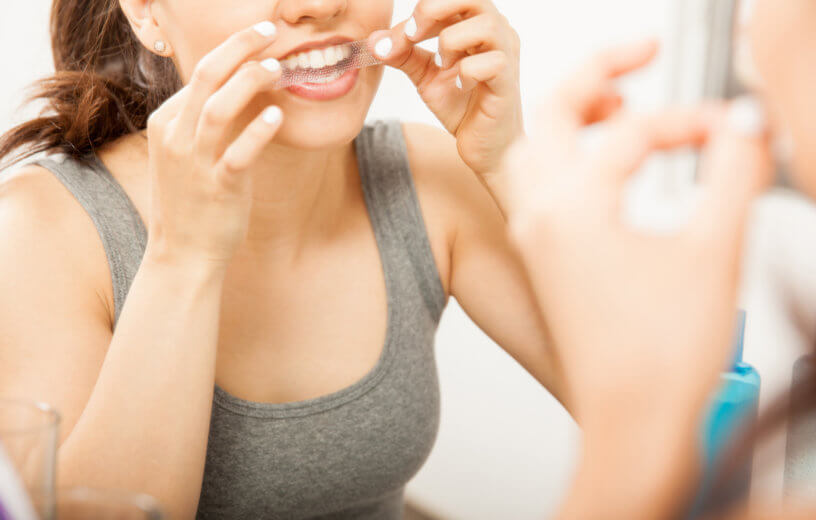Nothing boosts your confidence and mood like flashing a bright smile with pearly-white teeth. For most of us, though, achieving that movie star look is easier said than done and we often find that our smiles simply don’t match up to the ones we see on TV. That’s part of what has made teeth whitening such a popular practice in America. If you often wonder about the best ways to whiten your teeth, you came to the right place. We’re breaking down some best practices to help you achieve a white smile and some ways to keep that smile looking great.
So, which current methods are considered the most effective? StudyFinds did the research, consulting 10 expert sites to bring you some of the best ways to whiten your teeth. Our list comprises the seven most frequently listed methods for teeth whitening from across these trusted sites. Do you know of a proven product or method that whitens your teeth? Feel free to share with the community in the comments section below!
The List: Best Ways to Whiten Your Teeth, According to Experts
1. Whitening Toothpaste
One of the best ways to whiten your teeth is to use whitening toothpaste. Whitening toothpaste includes ingredients to keep your teeth clean and white with some type of peroxide or bleaching formula. There are all sorts of whitening toothpastes available on the market so you’ll want to do your research before settling on one specific brand. We’ve done that for you!
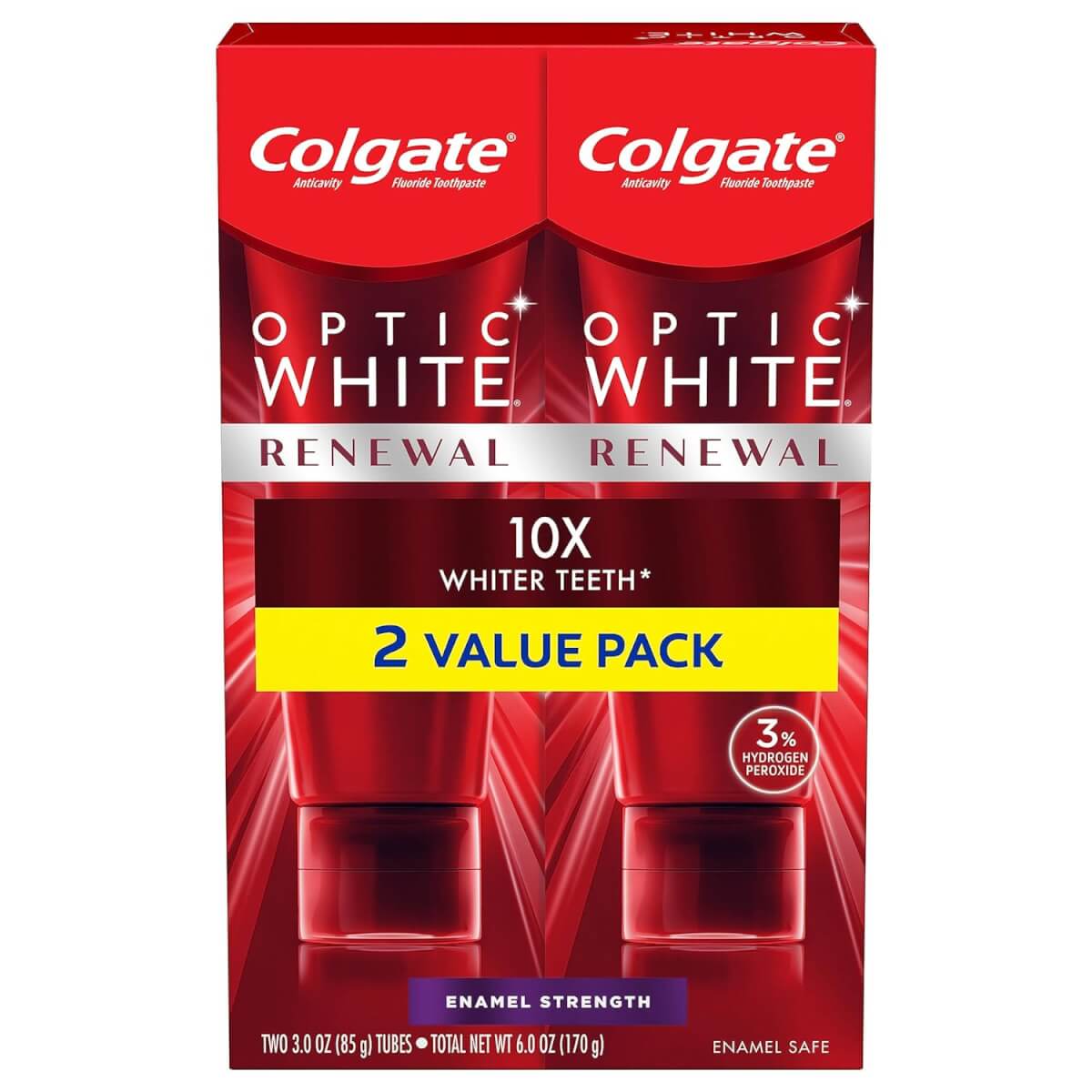
Brushing your way to a brighter smile doesn’t have to be complicated or expensive. According to Health Partners, American Dental Association (ADA)-approved whitening toothpastes are a budget-friendly option that can give your pearly whites a noticeable pick-me-up. Think of them as your first line of defense against everyday staining from coffee, tea, or red wine.
But before you grab the first whitening toothpaste you see, Forbes warns about choosing the right formula. Harsh abrasives might give you a quick fix, but they can damage your enamel over time. Look for an ADA-approved toothpaste that gently removes surface stains without stripping away your smile’s natural defenses.
Real Simple sums it up perfectly: whitening toothpastes work best for surface stains, not a complete color overhaul. So, if you’re looking to dramatically lighten your teeth, they might not be the answer. However, for a brighter, more polished look without breaking the bank or risking sensitivity, ADA-approved whitening toothpaste is a winner.
Check out our list of the best whitening toothpastes here.
2. Brushing with Baking Soda and Hydrogen Peroxide
This method involves creating a homemade toothpaste mixture by combining baking soda and peroxide and using this to brush your teeth. Hydrogen peroxide is widely used for cleaning wounds and it has bleaching properties that will help remove stains. The baking soda will act as an abrasive to help clean your teeth and polish out stains. Mixing the two together to form a paste is a great way to help whiten your teeth without spending a fortune on expensive gels, strips, or whitening toothpaste. Short Pump Dental swears by this method, highlighting its effectiveness in removing plaque and killing germs, thanks to the antibacterial properties of both ingredients. Plus, baking soda’s mild abrasiveness helps buff away surface stains.
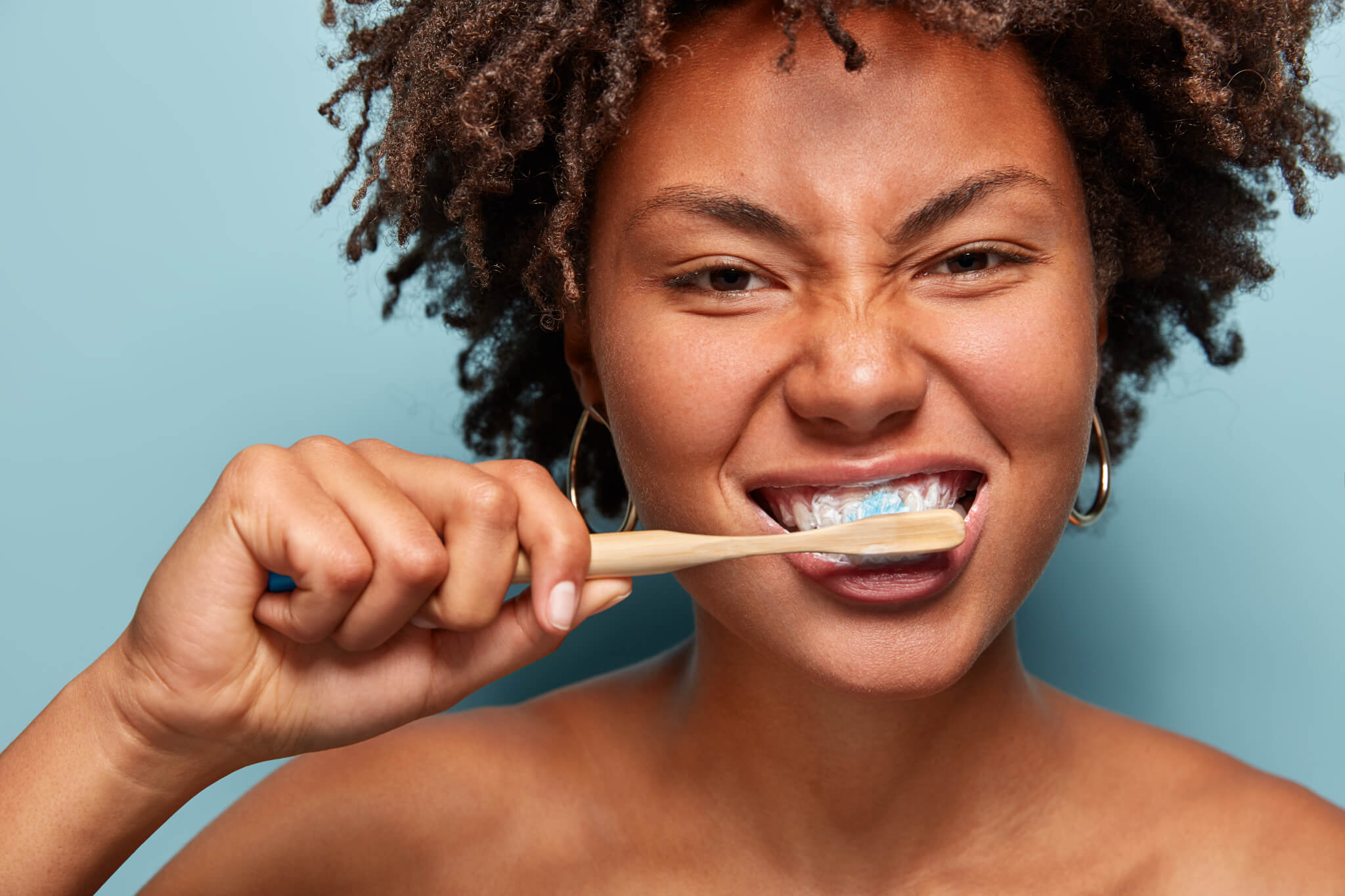
Pleasant Family Dentistry breaks down the science: baking soda gently scrubs, while hydrogen peroxide acts as a natural bleach. Sounds like a winning combo, right? Medical News Today offers a word of caution though. This method is best as an occasional pick-me-up, not a regular routine. Brushing with this mixture too often can irritate your gums or even damage your enamel.
So, if you’re looking for a quick and easy at-home whitening solution, a baking soda and hydrogen peroxide paste might be worth a try. Just remember, moderation is key! For a more long-lasting whiten, it’s always best to consult with your dentist about professional options.
3. Oil Pulling
The next method for whitening your teeth involves using natural oils to help remove stains and is known as oil pulling. Oil pulling removes harmful bacteria that cause issues such as plaque buildup, effectively helping to whiten your teeth.
Ever heard of swishing your way to a whiter smile? Oil pulling, an ancient Indian tradition, has become an internet sensation for its supposed teeth-whitening powers. Healthline explains the practice involves swishing oil around your mouth to remove bacteria, the culprits behind plaque and yellowing teeth. Coconut oil, with its pleasant taste and antibacterial properties, is a popular choice.
Several types of oil will work for oil pulling including coconut oil, sunflower oil, and sesame seed oil. Again, there isn’t any real scientific evidence that oil pulling will intrinsically whiten your teeth but the added cleaning practice is a great preventative measure. Let’s be real here, oil pulling is not suggested as a cleaning substitute for regular brushing and flossing. Regular brushing and flossing is the first step to healthy teeth and gums.
The American Dental Association (ADA) isn’t sold, classifying it as “unconventional dentistry” according to Medical News Today. While studies are lacking, some people swear by it for whitening, as Pleasant Family Dentistry points out. There’s also the bonus of potentially fresher breath thanks to reduced bacteria.
4. Whitening Strips and Gels
Another one of the best ways to whiten your teeth is by using whitening strips and gels. Over-the-counter (OTC) whitening strips are placed over dry teeth and left for a specified amount of time. The strips contain various ingredients and gels formulated to whiten your teeth – most of which are peroxide-based bleaching agents.

Unlike a peroxide and baking soda combination, whitening strips are less harsh on your teeth and offer similar, if not better whitening results. Of course, you’ll always want to follow the instructions that come with your whitening strips as those will indicate how long to use them and directions to achieve maximum results.
Health Partners explains that these handy strips pack a powerful punch with concentrated whitening ingredients, thanks to a hero ingredient called hydrogen peroxide. Unlike toothpaste with its fleeting contact, strips adhere to your teeth for a longer period, allowing the peroxide to work its magic and banish those stubborn stains.
Forbes compares them to a spa treatment for your teeth – extended exposure to the whitening solution for a noticeable difference that can last for months. The best part? They’re easy to use! Just apply the strips, relax for a bit (think Netflix and chill!), and voila – a whiter smile in just a few weeks. For those seeking lightning-fast results, some strips, like Crest Whitestrips, even promise a brighter smile in a single day!
Ask the Dentist warns about potential gum irritation from the peroxide and adhesives in some strips. A quick snip with scissors before applying can help prevent discomfort so they fit to your teeth.
Check out our list of the best whitening strips here.
5. In-Office Bleaching
Of course, this teeth-whitening method involves going to your dentist, paying a co-pay or an office visit charge, and sitting in the dreaded chair for part of an afternoon, but it’s worth all that for white, shining teeth. Your dentist will likely use a professionally concentrated whitening formula proven to whiten your teeth quickly and effectively.
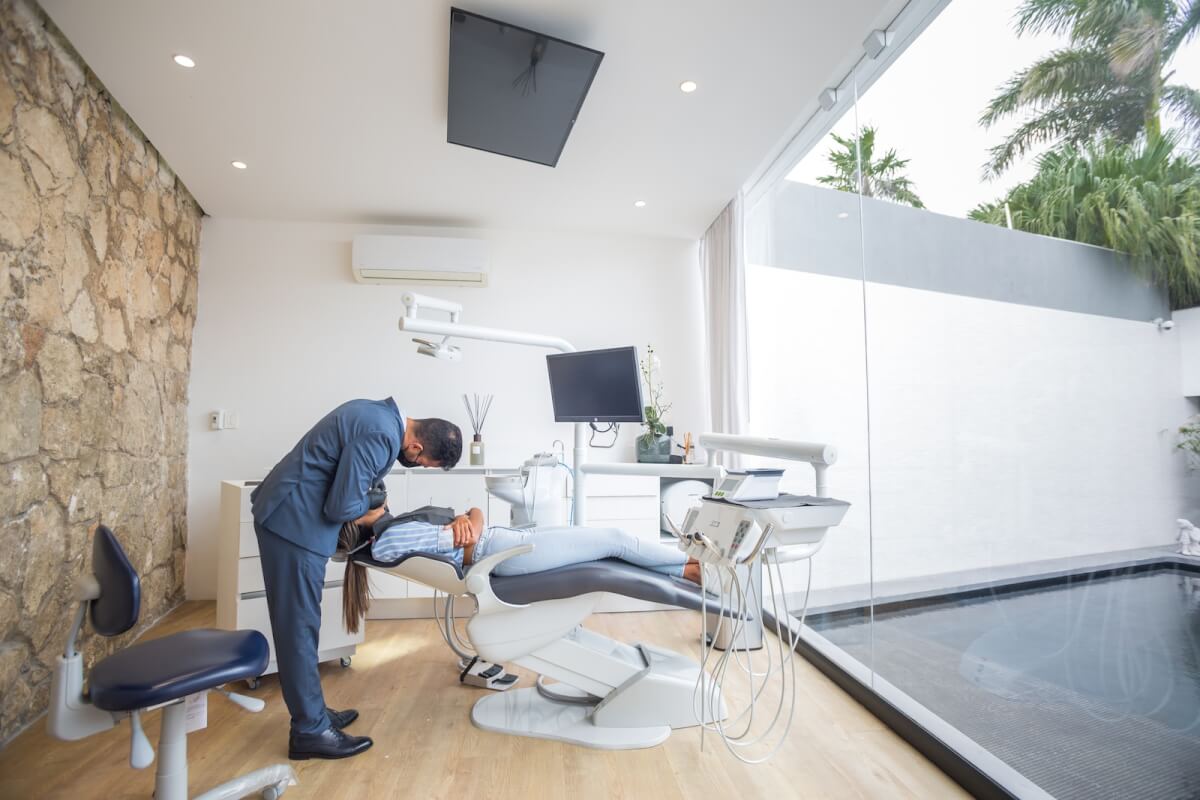
AARP explains that in-office whitening treatments pack a powerful punch with concentrated peroxide solutions, way stronger than anything you can buy at the store. The dentist applies the gel, shields your gums, and within 30-60 minutes, you’re well on your way to a noticeably whiter smile.
In-office bleaching is going to be the quickest way to see the results you’re looking for in whiter teeth. However, this is also going to be your most expensive option unless you have stellar dental coverage with your insurance. In-office bleaching can cost anywhere between $500 and $1,000 with the national average being around $650 per session. But, if you have the means and you need whiter teeth right away, professional whitening from your dentist is going to be your best option.
Think of it as a VIP whitening experience. Real Simple emphasizes that professional treatments deliver the most dramatic results, leaving you with a bright, even smile that’s the perfect starting point for your at-home whitening routine. But here’s the thing: bleach isn’t magic. GQ reminds us that in-office whitening isn’t a one-time fix. To maintain that superstar smile, you’ll need a maintenance plan (which your dentist can help you create).
Similar to using peroxide-based whitening strips, the high concentrations of peroxide used with bleaching can increase gum and tooth sensitivity. If you have any cavities or tooth decay, the solutions used during bleaching can exacerbate the problems – and put you in a lot of pain along the way. Take this into consideration before investing in this treatment.
6. Eating Fruits and Vegetables
Consuming a healthy amount of fruits and vegetables is more of a preventable measure than an active whitening practice, but healthy eating whitens your teeth in more ways than one. First, some fruits and veggies contain enzymes with the potential to help whiten your teeth.
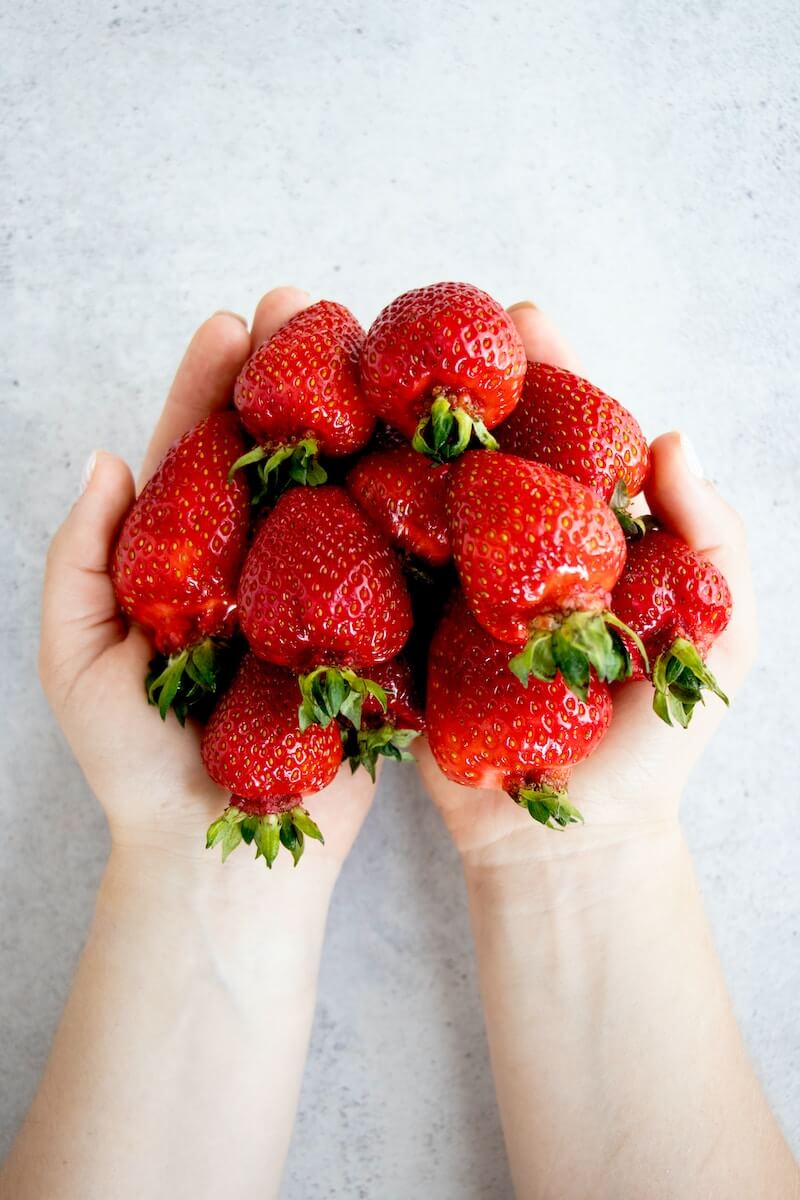
Medical News Today mentions papain and bromelain, enzymes found in papayas and pineapples respectively, that might hold promise as natural whiteners. Imagine incorporating these tropical fruits into your diet for a smile that’s both healthy and radiant!
Health Partners points out that other fruits and veggies like apples, strawberries, celery, and carrots are rumored to have whitening properties. While science might not fully back these claims, they do encourage a balanced diet which is great for your overall health (and a healthy smile!).
Then there’s the strawberry and baking soda paste, a popular internet remedy. Healthline explains the science behind this DIY treatment: the malic acid in strawberries might gently exfoliate, and baking soda has mild abrasive properties. However, they caution that this method might not be strong enough to tackle deep stains.
So, the verdict on natural whitening methods? They might not be a miracle cure, but incorporating whitening fruits and veggies into your diet can’t hurt. And while the strawberry and baking soda paste might not be a dentist-approved treatment, it’s definitely gentler on your teeth than harsh chemical whiteners. The best bet? Talk to your dentist about safe and effective whitening options for a smile that’s both healthy and bright!
7. Avoid Activities, Behaviors, and Foods that Stain Teeth
Rounding out the list is another prevention method. Much of this method involves lifestyle changes such as not smoking or vaping and avoiding foods that stain your teeth. But, when you combine these changes in behavior with regular brushing and various whitening products, you’ll slowly start seeing some real changes in your smile.
Here’s the thing: maintaining that pearly-white gleam requires a little TLC. Medical News Today warns that certain foods and drinks can wreak havoc on your newly whitened teeth. Think red wine, coffee, tea, and dark colored juices – all notorious stainers that can leave you with a dull smile faster than you can say “latte.” Even healthy fruits like citrus can be culprits, as their acidity can erode enamel.
But don’t despair, coffee lovers! GQ spills the tea (literally) on how to minimize staining. First, give your enamel a chance to breathe after any whitening treatment, professional or DIY. Skip the post-whitening latte for at least an hour to let your enamel rebuild its defenses. Think of it as a post-whitening facial for your teeth!
Here’s another trick: sip staining beverages through a straw. Healthline explains that this clever maneuver minimizes contact with your teeth, reducing the chance of unwanted pigments settling in. And of course, brushing about an hour after indulging in these treats helps remove lingering stains before they set in. For an extra dose of stain-fighting power, consider rinsing with water after each sip.
Remember, moderation is key. You don’t have to ditch your favorite dark chocolate bar completely, but enjoy it mindfully and take steps to minimize staining. And while we’re at it, say no to smoking and tobacco use, which can also stain your teeth. With a little awareness and these simple tips, you can maintain that bright, beautiful smile for weeks to come!
Sources:
- Healthline
- Health Partners
- Medical News Today
- Forbes
- GQ
- Pleasant Family Dentistry
- Ask the Dentist
- Short Pump Dental
- Real Simple
- AARP
Note: This article was not paid for nor sponsored. StudyFinds is not connected to nor partnered with any of the brands mentioned and receives no compensation for its recommendations. This article may contain affiliate links in which we receive a commission if you make a purchase.
